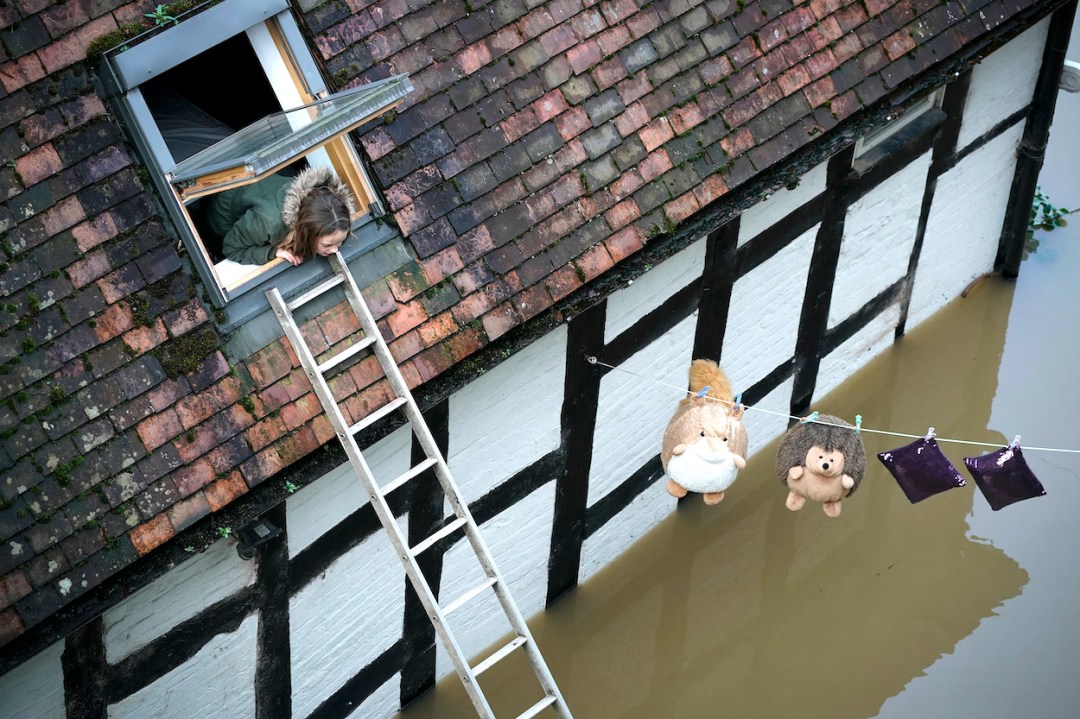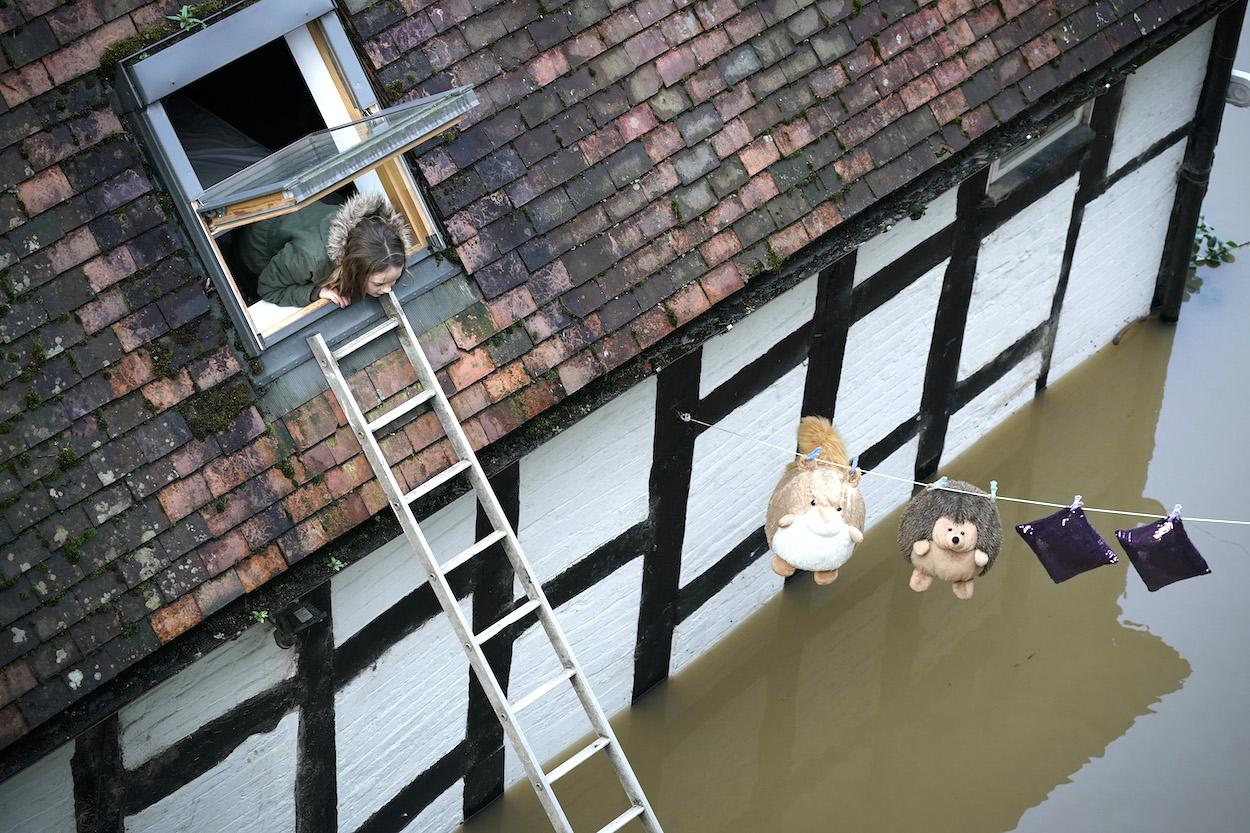Shropshire was named this week as an unlikely entrant in the top ten global dream travel destinations for 2024 – alongside more predictable contenders like Mauritius. This news received extensive media coverage, most of which featured serene, summery images of Ironbridge, the Georgian engineering marvel that is the county’s most recognisable attraction. There was something wonderfully British about the fact that, at the very moment this story appeared, Ironbridge itself was at the centre of flood defence efforts to stop the swollen River Severn bursting its banks.
The ruin that floods can bring has plagued mankind since the earliest settlements
Thankfully, those Ironbridge defences held firm but after days of torrential rain, things didn’t work out so favourably for other parts of the country. Tens of thousands of homes were inundated with water, dozens of cars were washed away. The ruin that floods can bring has plagued mankind since the earliest settlements and consequently written accounts of flooding are as old as literature itself. There are depictions in Gilgamesh, the world’s first substantive narrative, which in turn informed the Old Testament’s Noah’s ark episode.
This was later parodied by Chaucer in The Miller’s Tale – in which a priapic lodger attempts to cuckold his host by convincing him a biblical flood is imminent and that he should prepare for the worst, allowing the student opportunity to seduce his wife. This kind of ungentlemanly conduct deserves stiff punishment – which does eventually arrive in the form of a red hot poker applied to the lustful lodger.
Although flooding is a menace, it can be enjoyed. This is providing one is tucked up safely in a warm, dry room with, perhaps, a fire on, a glass of red wine – and a good book… rather than ankle deep in water in one’s own kitchen. The following then are suggestions of what that good book might be.
Mill on the Floss – George Eliot, 1860
The whole book has a river running through it but it’s in the climactic sequences that both the main characters’ emotions and the water levels surge. As events accelerate dramatically for Maggie Tulliver and her brother Tom, they’re swept along to the haunting end.
The Return of the Native – Thomas Hardy, 1878
The exotic and tempestuous Eustacia Vye is torn between lovers in this elemental year in the life of Hardy’s Wessex. Things come to a head on a stormy night as the heroine and her love rivals converge by the raging waters of Shadwater Weir, with tragic consequences.
After London – Richard Jefferies, 1885
This almost certainly influenced Ballard (below) as it did other 20th century sci-fi: a late Victorian proto post-apocalyptic novel which depicts a world where ruined technology plunges mankind back to medieval living conditions – on the shores of the toxic black lake that now covers what was the greatest city in the world until disaster struck.
The Nine Tailors – Dorothy L. Sayers, 1934
Like Mill on the Floss, this tale has a fictionalised setting, this time Lincolnshire. It begins with Lord Peter Wimsey running his car into a ditch in a snowstorm on New Years Eve and he soon becomes caught up in mystery. The water levels on the bleak Fens are on the rise, providing this with the extraordinary atmosphere that makes it Sayers’s masterpiece and possibly the greatest English detective novel of them all.
Their Eyes Were Watching God – Zora Neale Hurston, 1937
Like the Hardy, this saves its tempestuous waters sequence for the conclusion in which heroine Janie Crawford and her husband fight out their volatile marriage against the backdrop of a hurricane that hits the Florida Everglades and creates a flood that is soon biblical.
The Wild Palms (also published as If I Forget Thee, Jerusalem) – William Faulkner, 1939
This evokes the damp Deep South world described by Bob Dylan in Crash on the Levee: ‘Water’s gonna overflow, swamp’s gonna rise and no boat’s gonna row’. Two entwined stories collide as the swollen Mississippi bursts its banks and in the ensuing chaos corpses, convicts and imperilled women are washed around dramatically.
The Kraken Wakes – John Wyndham, 1953
Giant aliens invade the world from outer space but instead of attacking cities set up home in the depths of the oceans – so their form and function remains mysterious. But the menace increases as ships begin to sink, coastal towns come under attack and water levels begin to rise and rise… until London begins to disappear under water.
The Children of Green Knowe – Lucy M. Boston 1954
Another Fenland novel, this time in what was then Huntingdonshire but has since been subsumed into Cambridgeshire. This is one of those children’s books that are too good to be confined just to children. The story is haunted by both water and ghosts – and is magnificently atmospheric. The scene in which a horse baulks at crossing a raging river is sublime.
The Drowned World – J.G. Ballard, 1962
As the title suggests, the whole world floods in this dystopian sci-fi. But it’s to London – or rather floating above what was London – that Ballard takes us for dramatic interplay between naval officers and scientists who are all unravelling mentally while the world drowns. In one memorable scene, a section of the submerged city is pumped out, allowing our hero to descend into a muddy and ruined West End. Ballard also wrote a companion-piece two years later with the reverse scenario – a waterless one, in The Burning World (also published as The Drought).
Waterland – Graham Swift 1983
This puts us back in the Fens, this time in Norfolk, featuring not one flood but three – across three different centuries – which are powerful enough to drag gravestones away and disinter the dead. This is all eel traps, sluice gates, locks, drownings and family secrets.







Comments